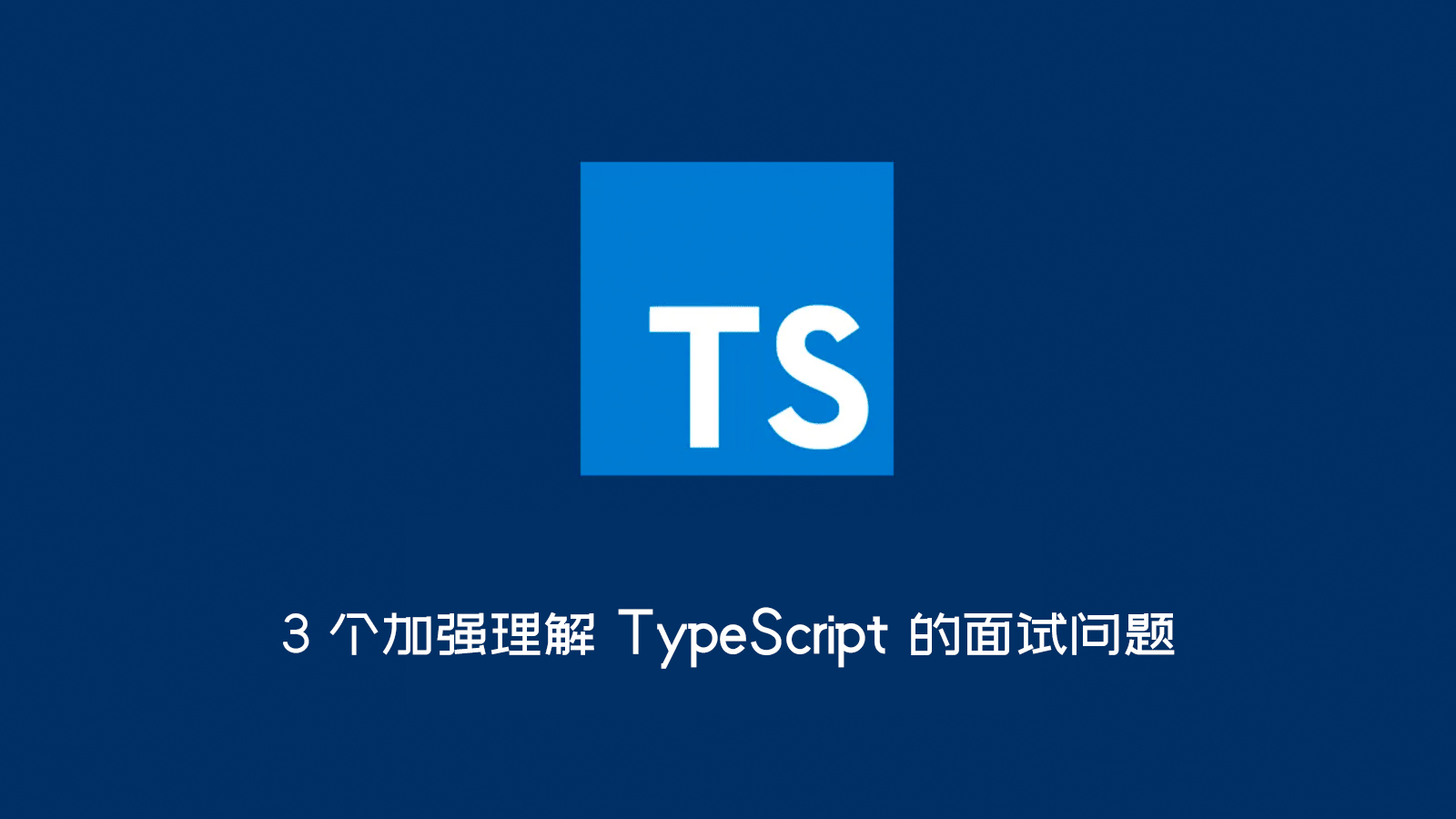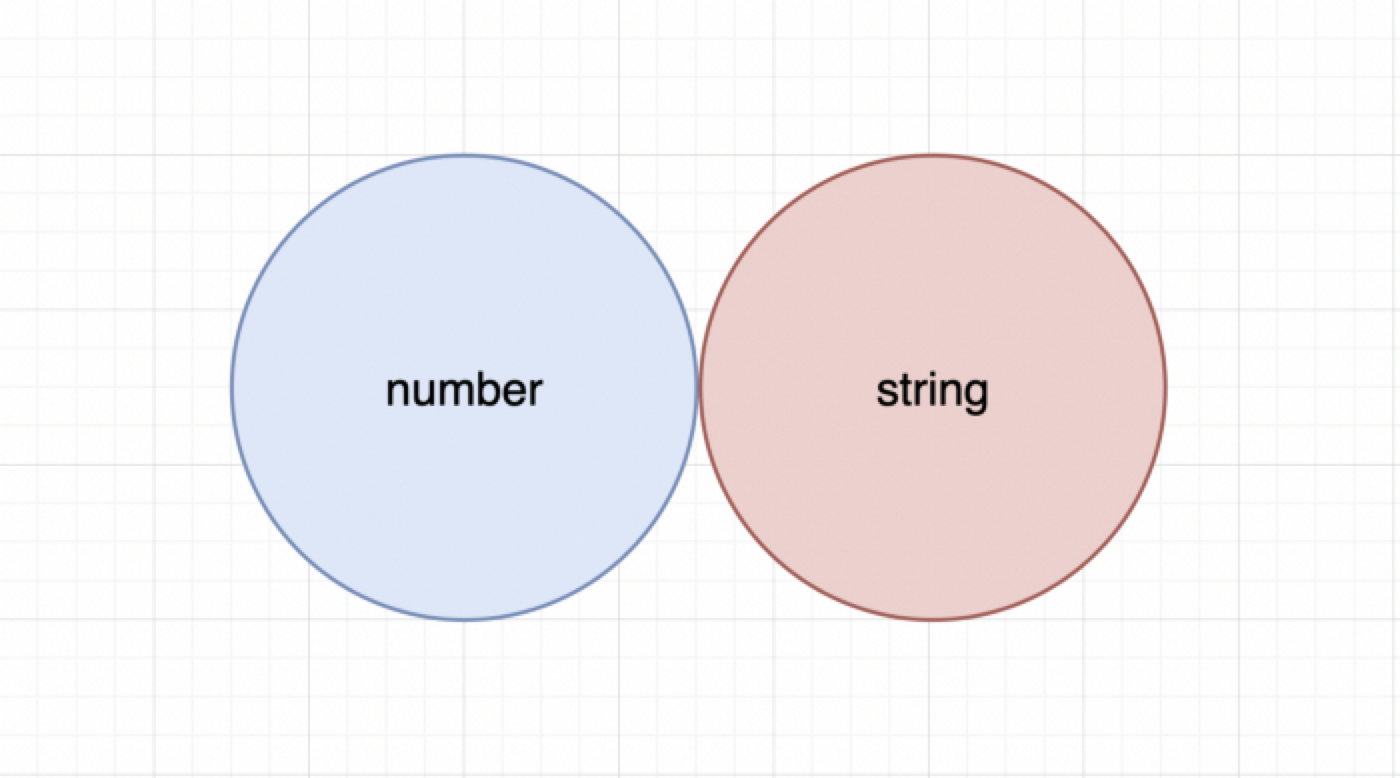3 个加强理解TypeScript 的面试问题

TypeScript 作为 JavaScript 的超集,让 JavaScript 越来越像一门“正经的”语言。和纯粹的 JavaScript 语言相比,TypeScript 提供静态的类型检查,提供类的语法糖(这一点是继承了 ES6 的实现),让程序更加规范和紧凑,为使用 JavaScript 开发大型项目提供了必要的条件。本文介绍 3 个加强理解的面试问题。
A 的类型是什么,为什么?
通常在面试中会有一些阅读程序语句给出结果的问题,一般是一段非常简单的代码,是检验候选人对基础的理解。
type A = number & string;
答案很简单,A 的类型是 never,为什么呢?因为 & 是交集运算符,如果将字符串和数字视为一组值,则可以对其进行赋值。那么字符串集合和数字集合的交集是空集,在 TypeScript 中用 never 表示,换句话说,不存在可以同时属于数字和字符串的值:

运行时验证
假设候选人成功回答了第一个问题,这意味着大概率候选人对基础有了很好的理解。现在,需要变得更复杂一点,变得非常实际:假设有一个 API,它返回给我们一个 JSON 字符串,其中包含有关用户的信息。
问题是:如何验证用户对象,并确保它确实满足
User类型?
type User = {
name: string;
age: number;
};
const data = `{"name":"Bob","age":30}`;
const user: User = JSON.parse(data);
console.log(`Username: ${user.name.toLowerCase()}`);
console.log(`Age: ${user.age.toFixed(0)}`);
答案基本上有两种方式:
首先,如果 User 类型很小,比如现在只有两个字段,这对我们来说没问题,那么我们可以编写一个简单的验证函数:
function isUser(obj: unknown): obj is User {
return (
typeof obj['name'] === 'string' &&
typeof obj['age'] === 'number'
);
}
并像这样使用它:
const data = `{"name":"Bob","age":30}`;
const user = JSON.parse(data); // user type if any here
if (isUser(user)) {
console.log(`Username: ${user.name.toLowerCase()}`);
console.log(`Age: ${user.age.toFixed(0)}`);
}
第二种变体,它更方便——使用你喜欢的任何库来使用模式验证:class-validator、zod、runtypes、joi 等:
import Joi from "joi";
const UserSchema = Joi.object({
name: Joi.string(),
age: Joi.number(),
});
const data = `{"name":"Bob","age":30}`;
const userData = JSON.parse(data);
try {
const user = UserSchema.validate(userData);
console.log(`Username: ${user.name.toLowerCase()}`);
console.log(`Age: ${user.age.toFixed(0)}`);
} catch (e) {}
这个问题不仅要检查有关数据验证的知识,还要检查候选人对技术堆栈的了解程度,可以通过哪些方式完成等。
在类型中使用递归
最后一个问题通常是实用的,它是关于如何编写递归类型的。在此示例中,需要问题的解决方案:假设正在编写一个函数 find() 来搜索数据库中的用户。问题是该类型 User 具有地址等属性,它也是一个对象。想以 find() 这种方式构建函数,这样可以通过 User 的嵌套属性进行搜索,并提供完整的类型支持:
function find<T>(criteria: ...): T[] {
...
}
type User = {
id: number;
name: string;
address: {
country: string;
city: string;
house: string;
zipcode: string;
};
};
// in this example im searching by country only, even if
// address has other properties.
const users = find({
address: { coutry: 'CN' }
});
如何实现:创建另一个名为 DeepPartial 的类型,并在 find() 函数中使用它作为条件参数:
type DeepPartial<T> = {
[P in keyof T]?: DeepPartial<T[P]>;
};
function find<T>(criteria: DeepPartial<T>): T[] {
...
}
type User = {
id: number;
name: string;
address: {
country: string;
city: string;
house: string;
zipcode: string;
};
};
const users = find({
address: { coutry: 'UK' }
});
DeepPartial<T> 几乎与 Partial<T> 一样工作,但唯一的区别是它递归地应用于对象的每个嵌套属性:
type User = {
id: number;
name: string;
address: {
country: string;
city: string;
house: string;
zipcode: string;
};
};
// DeepPartial<User>
type DeepPartiallUser = {
id?: number;
name?: string;
address?: {
country?: string;
city?: string;
house?: string;
zipcode?: string;
};
};
希望通过上面这些 TypeScript 的小例子可以帮助更好地使用它,并且在还不知道这些东西的情况下写出更好的代码。